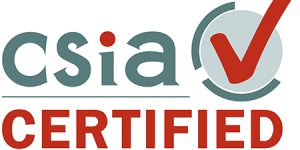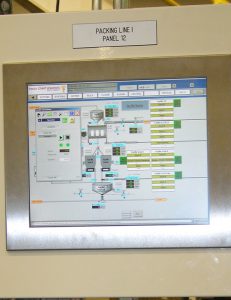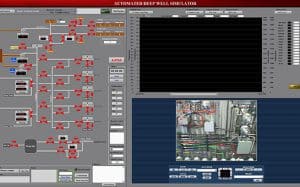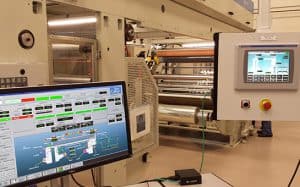System Integration Services
Optimation provides systems integration services to meet a wide variety of automation requirements in process and manufacturing industries. System integration is the bringing together of the component subsystems into one system and ensuring that the subsystems function together as a system. A control system integrator takes a problem that may have some engineering input and that has general requirements and specifications and provides an answer that includes final project engineering, documentation, procurement of hardware, development of custom software, installation, testing, and commissioning.
Broad Range of Skills
Our engineers are experienced in providing requirements definition, functional specification development, system prototyping, implementation, testing, documentation and training. System integration problems often present new challenges that do not have a current known solution. We understand that this process can include a substantial amount of diagnostic and troubleshooting work.
Robot Integration
Knowing how to program a robot isn’t enough – you need a partner with deep process knowledge AND robotics expertise. Optimation offers industrial robot integration services that include technology selection, modeling, design, installation, startup and integration with your existing processes.
Database Development
Integration and database development is necessary in today’s connected plant environment. Our engineers understand how to use the latest tools to keep your data archived safely, your recipes accessible and secure and your plant systems talking to your enterprise systems.
Certified Best Practices: Founding member of CSIA
The Control Systems Integrators Association (CSIA) is committed to the business development of control system integration companies and their implementation of best practices in order to provide a healthy, low-risk channel for the application of technology to industrial clients. Optimation is a certified member of CSIA, and leverages this as a framework to evaluate and continuously improve our company.
Large Product Knowledge Base
Our system integration engineers know how to pull it all together and match customers’ needs with existing products. We strive to be generalists with a working knowledge of a large number of products. System integration is also about adding value to the system, providing new capabilities that are possible because of interactions between subsystems.
Example Systems Integration Applications
PLC Examples
- Allen-Bradley/Rockwell
- ControlLogix
- CompactLogix
- GuardPLC
- Micro800
- SIMATIC-S7
- Mitsubishi
- GE
- Modicon
SCADA / HMI Examples
- FactoryTalk View SE/ME
- InTouch/InTouch Machine Edition
- iFix
- Mitsubishi
- Ignition
- SIMATIC WinCC
Robotics
- Mitsubishi
- KUKA
- Fanuc

- Epson
- Omron
- Staubli
DCS Examples
- Simatic PCS 7
- Delta V
- ABB MOD 300
- Fisher Provox
- Moore
- Foxboro IA
Test Systems
- National Instruments
- Allen-Bradley/Rockwell
Programming Languages
- C#

- VB.Net
- Python
- Legacy languages (such as C/C++, VisualBasic, Assembly and Fortran)
Communications Networks Examples
- Ethernet/IP
- DeviceNet
- DataHighway+
- PROFIBUS/PROFINET
Project Approach
- User requirements are what our clients need – in their terms. It defines in results-oriented terms what the customer is looking for.
- A functional requirements specification (FRS) defines the system functionality that will support the user requirements. The body of the FRS then describes (in as much detail as possible) the parameters that will dictate the various project phases. In addition to the FRS, the factory acceptance test (FAT) criteria document is written in this phase. This defines the finish line of the project.
- Design requirements take the FRS and translate them into language that supports detailed implementation of the project. This is the realm of state diagrams, flow charts, logic flow diagrams, etc. On the hardware side, this involves the Piping & Instrumentation diagrams, 3D layout drawings, etc.
- During implementation, the engineer will plan and perform appropriate unit tests so components and modules are validated for their own specific functions.
- System documentation and user manual development flow from the design and architecture documents in the design phase.
- The factory acceptance testing (FAT) flows from the FRS and FAT test document.
- The site acceptance test (SAT) focuses back on the customer’s requirements and desired results.
